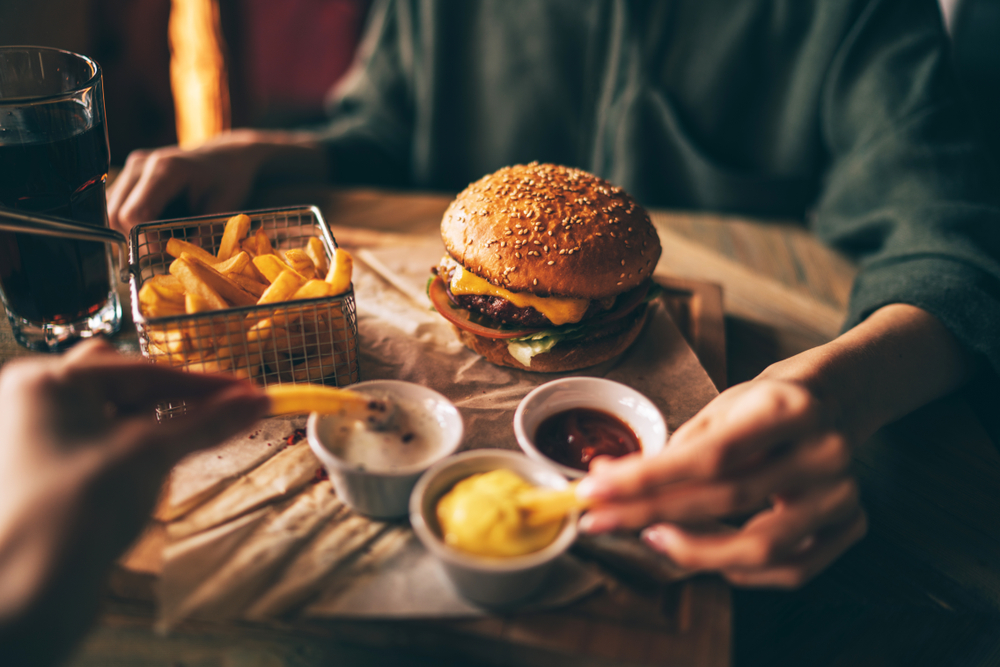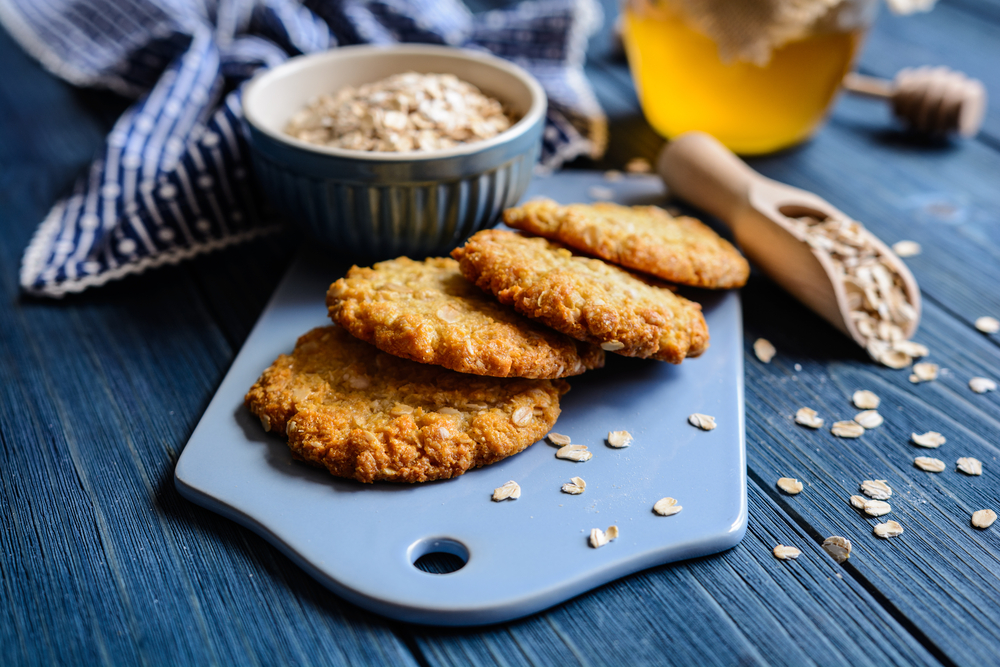
Almost four in five Aussies are eating twice the amount of junk food recommended in the dietary guidelines every day.
What did you have on your plate yesterday? A bowl of cereal for breakfast, a slice of cake at the office celebration, a ham and salad sandwich for lunch, and a muesli bar to get you over the afternoon slump. For dinner, a noodle stir-fry full of veggies with a glass of your favourite wine.
Sounds pretty healthy, especially the veggie stir-fry, right? But with so much nutritional noise out there it can be hard to know if you’re on the right track.
So, we’ve developed a new tool, the Junk Food Analyser, to help with your food and drink choices. You can enjoy discretionary food – known as ‘junk food’– in a healthy way!
The dietary lowdown
The Australian Dietary Guidelines recommend we enjoy a wide variety of foods from five main food groups each and every day:
- Vegetables and legumes/beans
- Grain foods, mostly wholegrain and/or high cereal fibre varieties
- Lean meats and poultry, fish, eggs, tofu, nuts and seeds
- Milk, yoghurt, cheese and/or alternatives
- Fruit
But did you know the Australian Dietary Guidelines also allow for discretionary foods and beverages in our daily diets? Yes, you read that right. So what does that look like?
What is a discretionary food?
Discretionary foods and drinks are high in saturated fat, added sugars and salt, or alcohol. These foods and drinks are generally high in kilojoules and not necessary for nutrition or health. However, they do add variety and enjoyment to our diets.
The dietary guidelines recommend Australian adults consume zero to three serves maximum of discretionary food per day. However, our research shows that most adults are overindulging on discretionary foods and drinks. This is a consistent challenge regardless of age, gender or weight status.
In fact, the average intake of 5.1 serves/day is almost twice the maximum recommended amount set out in the Australian Dietary Guidelines. It is easy to see how this is happening. A slice of cake, some processed meat in a sandwich, a muesli bar and some alcohol at night. And you’ve gone over the recommended daily intake.
What does five serves of discretionary food look like?
Here are five examples of what five serves might look like:
- 20 solid mini chocolate eggs
- Three-quarters of a family bag of chips
- 10-15 sweet biscuits
- 1.25 bottles of wine
- Three 600ml bottles of full sugar soft drink
The Australian Dietary Guidelines recommend Australian adults consume zero to three serves maximum of discretionary food per day.

Four small sweet biscuits is a healthy serve of discretionary food for one day.
Why are we drawn to these low nutritional value foods and drinks?
We have a natural preference for sweet and salty flavours. They are also ingrained into our day-to-day lives and tied to important events and occasions. Think cake at birthdays and celebratory drinks. This group of foods and drinks is also very diverse. So, it can be tricky to really understand how much we are eating, making them difficult to keep in check.
How do I know if I’m having too much?
You’ve come to the right place. We’ve developed a new tool, the Junk Food Analyser, which will help you to think about all the different types of discretionary foods and drinks you have over the day.
The interactive quiz, which takes no more than five minutes to complete, allows you to test the impact of different strategies on your intake. You can test halving your intake of chocolate and lollies, to taking a few days off per week from alcohol, or perhaps even eliminating pies and pastries for a few weeks.
Reducing your consumption of these foods can not only reduce your intake of saturated fat, added sugars, sodium and alcohol, but can also make room for healthy foods, such as vegetables.
It is important to remember that discretionary foods and drinks do have a role in a healthy diet. They add variety and enjoyment, we often socialise and celebrate occasions around these foods. Including these foods in small amounts or occasionally in our diet adds the freedom and variety that is needed to maintain a healthy diet longer term.


14th August 2023 at 6:05 am
Wow it’s amazing. thanks for this helpful article.
31st January 2022 at 6:05 pm
i did also try it
you can follow these tips
Drink Water. Thirst is often confused with hunger or food cravings. …
Eat More Protein. …
Distance Yourself From the Craving. …
Plan Your Meals. …
Avoid Getting Extremely Hungry. …
Fight Stress. …
Take Spinach Extract. …
Get Enough Sleep.
24th November 2021 at 10:05 pm
Diet and exercise are both important for optimal health. Achieving a calorie deficit through diet modifications is key for weight loss, while exercise provides many benefits that help sustain your results. Further, both exercise and diet can help reduce heart disease risk, build muscle, and improve your mental health
31st January 2022 at 6:09 pm
julia you are alright exercise and diet is a main part of our life and its both are necessaries
16th July 2021 at 11:42 pm
i try it and avoid junk food
10th April 2021 at 8:33 am
Just starting but was a fan of earlier programmes so pleased to be on board with you on this latest one.
24th August 2021 at 6:56 am
patricia
it’s amazing i try it
I suggest you follow all the instructions